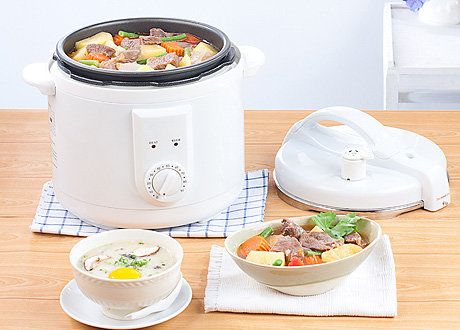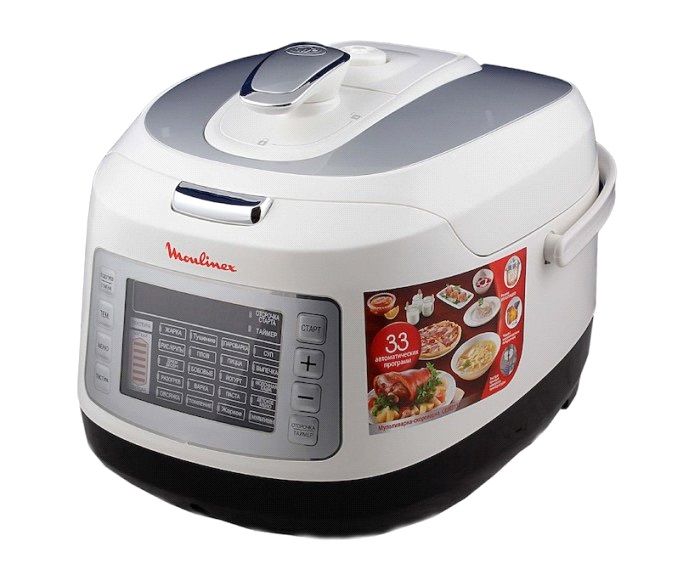Who invented the multicooker
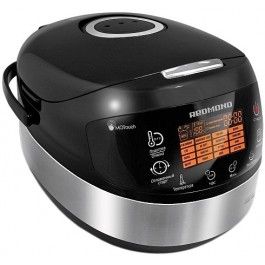 Technologies are actively developing and being introduced into our lives, making it more comfortable. Thus, kitchen assistants make the cooking process much easier and faster. A bread maker, steamer, oven, convection oven and many other household appliances are used in almost every kitchen. But a special place in this list is occupied by a multicooker, which incorporates the capabilities of all of the above devices. The invention was not spontaneous and has its own interesting history of development. So let's find out who came up with and invented the multicooker.
Technologies are actively developing and being introduced into our lives, making it more comfortable. Thus, kitchen assistants make the cooking process much easier and faster. A bread maker, steamer, oven, convection oven and many other household appliances are used in almost every kitchen. But a special place in this list is occupied by a multicooker, which incorporates the capabilities of all of the above devices. The invention was not spontaneous and has its own interesting history of development. So let's find out who came up with and invented the multicooker.
The content of the article
When did the first multicookers appear?
The first prototypes of modern multicookers were Japanese rice cookers from the mid-20th century. As part of the development of the military industry, the issue of automating the preparation of rice for the needs of the army in the field was raised.
The proposed solution was a wooden cooking container with a heating element that had a primitive automatic shut-off feature. Although not having a sufficient level of safety, this made it possible to cook rice in large quantities with minimal expenditure of human resources.
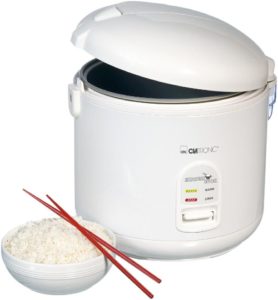 Subsequent modernizations of the device made it possible to expand the range of dishes, which began to include other cereals and some soups, a heating and maintaining temperature mode was added. All this became possible thanks to the transition from analog circuits to programmable microprocessors.
Subsequent modernizations of the device made it possible to expand the range of dishes, which began to include other cereals and some soups, a heating and maintaining temperature mode was added. All this became possible thanks to the transition from analog circuits to programmable microprocessors.
By the end of the century, the progressive functionality of the machines interested investors and rice cookers appeared on the Japanese market. Manufacturers tried to expand the possibilities of their use, and cooks began to publish recipe books aimed specifically at multicookers.
Yoshitada Minami
The inventor of the multicooker in its modern form is considered to be the Japanese Yoshitada Minami, the concept of which was implemented by the company Toshiba in 1956. A distinctive feature of his invention, which made a breakthrough in the development of kitchen technology, was the complete automation of the cooking process.

All devices before him could be called automatic only partially. To one degree or another, they still needed constant human supervision.
Minami managed to exclude the cook from this chain thanks to the idea of creating two combined containers, one inside the other. Only water was poured into the outer one, while washed rice was poured into the inner one.
After the cereal had completely absorbed water, a sensor on the wall of the outer container was triggered, signaling the completion of the process and turning off the electricity supply to the heating element.
From that moment on, the chef only had to fill the device with ingredients, press the power button and after a while take out the ready-to-eat product.
How multicookers developed
The Toshiba model turned out to be extremely successful. The device immediately gained popularity. To meet market demand, the company produced up to 200,000 copies per month. In such conditions, the company could not help but have competitors.
In the second half of the 20th century, another company from Japan became the main one, Zojirushi. Their innovations became a new stage in the development of multicookers.Starting in 1965, they began to equip their devices with adjustable timers. This made it possible not only to control the time and intensity of cooking, but also opened up the possibility of cooking several dishes at the same time, with a separate timer for each.
In addition, it was Zojirushi who made the function of maintaining the temperature at the same level mandatory in their models. This advanced the level of automation of multicookers even further, since from now on there was no need to even get food out of it on time. They could be stored there for a long time, remaining hot.
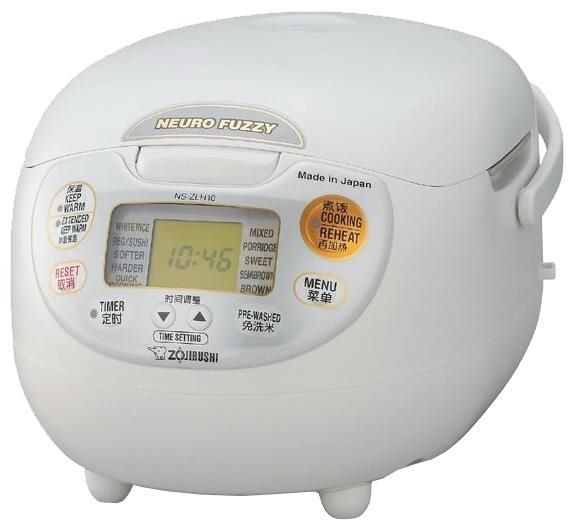
Japan lost its relative monopoly in the production of multicookers in the 90s of the last century. The championship passed to China. Chinese companies successfully adopted Japanese experience and technology, and their products were favorably low in price.
Conclusion
Competing for markets, manufacturers continue to improve devices today. Perfect progress has made this device a full-fledged kitchen robot, capable of taking over all processes in the kitchen. A modern multicooker can cook in any way:
- stew;
- cook;
- fry;
- oven, etc.
The variability of its settings, modes and design has little in common with analogues from the last century. One has only to remember a wooden box with two contacts and compare it with today's device with two dozen built-in programs and a futuristic design.
There are a variety of kitchen aids available on store shelves, varying in capacity, portability, features and cost. Buying a multicooker can not only greatly simplify cooking at home, but also diversify your menu with new dishes.




